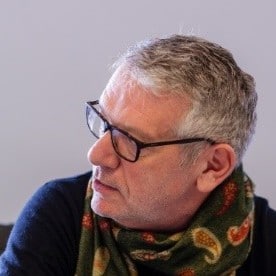Needing a purpose statement for an HR Technology project sounds a bit fluffy and unnecessary, right?
Why do you need one? We all know that the job to be done is to ensure a new digital investment is up and running as quickly and as cheaply as possible – and, of course, that it needs to do everything.
So, you form a team, pull the Project Methodology book off the shelf and off you go.
Then, when it gets close to deployment, you get a Change Manager to work out what’s changing and some training people to write materials, and launch…
But your well-planned launch and projected Employee Adoption meets resistance and confusion because, when you started the project, you didn’t think about the Why?
WHAT A PROJECT PURPOSE STATEMENT CAN ACHIEVE
Imagine an HR Services project with the Purpose of “Freeing up Employees’ time by Making HR Services simple”.
Firstly, the purpose statement provides an agreed (human) outcome for everyone working on the project to focus on rather than a technical one.
In this example. everyone knows:
- Who they’re doing it for (Employees)
- What they’re doing (Simplifying HR Services)
- Why they’re doing it (To free up Employees’ Time)
Secondly, a clear purpose statement allows the development of a Business Case, an easily understood set of metrics and KPIs, and Return on Investment and Break-Even calculations.
In this example, Simplicity and Time are measurable: Improved simplicity should lead to improved employee feedback scores.
Moreover, Time = money. So, measuring the amount of time saved by employees allows you to calculate the amount of money saved and Productivity gains realised.
Thirdly, the statement focuses everyone’s minds on what they should and (more importantly) shouldn’t do in the project.
In this case, if a particular design or process makes something more complicated or makes it take longer to complete, the design clearly isn’t fit for purpose!
WHAT PROBLEMS ARE SOLVED BY HAVING A PROJECT PURPOSE?
The loudest voice prevails
One of the biggest problems I come across when helping people deliver HR Technology projects is that the technologies are being developed for the wrong people and for the wrong reason. This is often because no thought has been given to “Who” and “Why”.
Without a clear, shared understanding of “What” is being done, for “Whom” and “Why”, the project becomes fragmented and pulled in a multitude of directions.
Competing ideas of what should be done often default to a project focused on delivering for “the loudest voice”.
Defining and agreeing a Project Purpose can resolve this kind of conflict.
The wrong Stakeholders are involved in Design
One historic problem with HR Technology projects is that “specialists” design technology solution and workflows with no reference to the actual people who will be using them.
How can you design something for someone without finding out what they think needs changing? In this example, asking Employees what their pain points are when engaging with HR Services would allow the project to focus on what employee problems need to be addresses and this what needs to be designed.
So, by creating a project purpose, the question of Who needs to be consulted when designing technology solutions becomes clear.
Low Adoption Rates
If you haven’t decided who your users are, what they need and why – and not only consulted them but also delivered what they need – you can’t expect them to adopt what you deliver.
How many times in HR have we heard employees complain that they’re “doing HR’s job for them”? This is often because we focus on the technology and process rather than a User-centred Project Purpose.
Creating a Project Purpose which defines the Who, What and Why means that you ask your Users to define their problems, deliver solutions which address these problems which means that, more often than not, they’ll use what you’ve delivered!
How do you create a Project Purpose?
Remember, everyone involved needs to know:
- Who they’re doing it for
- What they’re doing
- Why they’re doing it
So, to quote Carolyn Tate, author of The Purpose Project, the statement needs “three components: a verb; an intention; and an outcome or beneficiary”.
However, with HR Technology Projects it’s often difficult to move people away from focusing on delivering the technology and the process, to a consideration of the purpose of what they’re doing.
To resolve this Lisa Perrine suggests: “Try ‘The Five Whys’ – asking ‘why?’ five times in a row. It can be a powerful tool for discovering purpose” in Purpose-driven projects: Start with the Why.
In addition, it often makes sense to see if you can align with your Company’s purpose, if there is one.
And finally, many people can’t have failed to notice that the Who, What, and Why structure is at the heart of User Story format – the core of Agile.
- As an Employee
- I need HR Services to be simple
- So that I have more free time
But that’s a subject for a different blog…
Further reading:
Keith Williams: Digital HR is Different: Seven things you need to know and do to deliver a successful digital HR project
Graham Kenny: Your Company’s Purpose Is Not Its Vision, Mission, or Values
Lisa Perrine: Purpose-driven projects: Start with the Why
Michael Chavez: The Power of Purpose in Projects
Carolyn Tate: How to write a powerful purpose statement and ten of the best

About the Author
Keith Williams is ex-HR Services Technology Director @ Unilever and is a Director at KMW3. He uses his global experience to help organisations with HR Digital Transformation, digital Employee Experience and conversational Chatbots.
You can contact Keith at keith.williams@kmw3.com or +44 (0)7876 252278
RELATED INSIGHTS
Let’s talk


